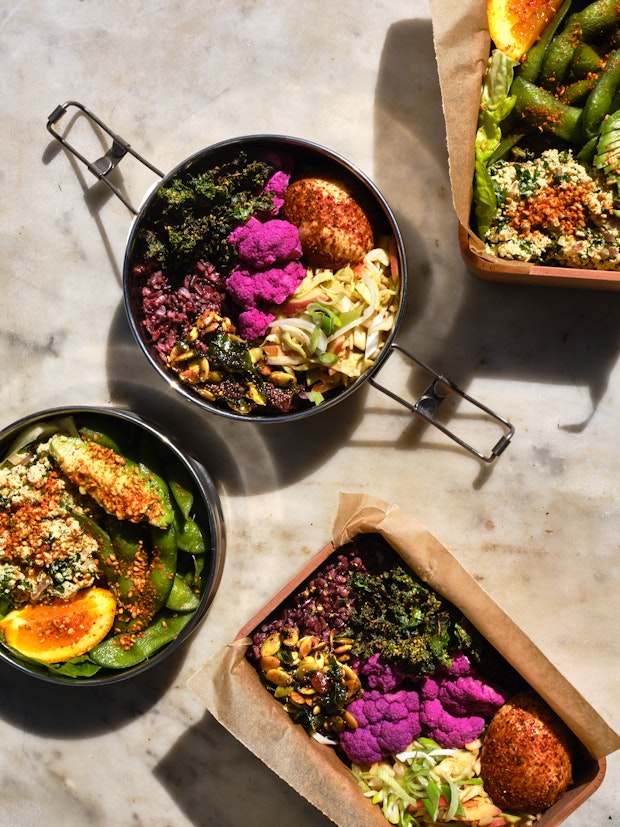Hard boiled eggs are a frequent ingredient in many meals and recipes. They’re foundational for countless cooks, and much-loved for being portable, filling, protein-rich, and adaptable. Once peeled they can be sliced, grated, smashed, or pureed. The key is landing on a cooking method that delivers perfect eggs every single time. So, let’s talk it through.
What Makes A Perfect Hard Boiled Egg?
The goal here is to cook fully set, smooth, eggs. That when cut open reveal a creamy, well-set, bright yellow yolk with no grey ring or discoloration. A lot of divots from peeling aren’t ideal, but there are methods to achieving divot-free eggs, no worries!
The Method
There are a few key steps here. Let’s go through them with photos.
- First, gently place your eggs in a saucepan.

- Next, cover the eggs with water by about an inch.

- After that, bring everything to a boil over medium-high heat (uncovered). Once the water reaches a boil, when the eggs start to tap a bit against the bottom of the saucepan, turn off the heat, cover, and set a timer for exactly 10 minutes.

- In the meantime, prepare a medium bowl with water and some ice cubes. Once your timer goes off, use a strainer, spider, or slotted spoon to move the eggs into the ice water. This is one of the steps a lot of people get wrong (or skip). You really want to cool they eggs down entirely. Peeling warm eggs is much more difficult than peeling cold one, and patience is king here. The quick cool-down also helps keep the eggs bright, yellow, and ring-free.

How To Best Peel a Hard Boiled Egg
This is something people really struggle with. Peeling an egg is actually trickier than you think, especially if you don’t want to lose a good amount of the egg along with the peel. We’ve all been there. Keep in mind that fresh eggs are always trickier to peel than eggs that are a bit older, but this is a method that helps remove the egg shell in strips and avoiding divots in the eggs. Here’s the technique:
- Crack the shell all over. One end of the egg (bottom) will vibe more hollow than the other, tap this end on your countertop. Then gently tap, tap, tap all around the egg to crack and loosen the entire shell. Some people will tell you to gently roll the egg on your countertop, and I’m not a fan of that technique. I’ve had eggs split around the circumference while carefully rolling, so tap, tap, tap it is.

- Start peeling. The hollow end (bottom) is where you want to start. Depending on the egg, you might be able to softly work your thumb under the membrane, pushing the shell away from the egg. If you’re lucky it will peel in long strips. If not, keep trying to get under that membrane and peel from there.
- Rinse. Give each egg a quick rinse and pat dry. This gets rid of any crunchy peel residual that might still be clinging to the egg.

How Long Can You Store Hard Boiled Eggs
Some say hard boiled eggs will last up to a week, but I try to use them within 4 days or so.
Why I prefer This Method For Hard Boiling Eggs
There are a number of other approaches to hard boiling eggs out there, but I always come back to this one. Common sense would have you boil the water first, drop the eggs in and continue to boil for a set amount of time. This minimizes the variables, because you’re dealing with constants – the temperature of boiling water and a set time period. But this method has you add a towel to your pan to keep the eggs from breaking as they boil, and tbh, I don’t love the cleanup from that. 
The method I use here is gentle with the eggs from the start, and it’s reliably good. The only wild card I’ve run into is using an induction stove burner. It boils the water SO FAST, the eggs end up needing a slightly longer time under cover. If you’re using induction, bring them to a boil a bit more slowly, a 6 setting works well.

Wooohoo! I Can Make Perfect Hard Boiled Eggs – What’s Next?
Once you make hard boiled eggs, you are on your way. Here are a few other ideas.




